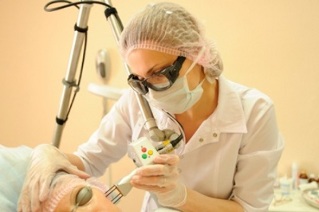
Fractional rejuvenation involves the use of a laser. This is a very complex procedure that solves a wide range of skin problems that inevitably arise as the body ages. It requires high professionalism on the part of the specialist who performs it. Only a specialist with medical training and completed courses on work with laser equipment has the right to conduct laser rejuvenation. By carrying out the procedure in a questionable clinic with an unqualified cosmetologist, it is possible to achieve a negative effect instead of the desired rejuvenation.
Fractional laser treatment is a worthy option for those looking for ways to rejuvenate their face without surgery. By the way, this method is used not only on the face, but also on the body. In particular, using a laser, it is possible to make scars and striae invisible. Then laser rejuvenation will be interesting for those who have long been interested in the problem of how to remove stretch marks from the body.
Variety of fractional laser rejuvenation
The fractional laser sends not one beam, but many microscopic rays, which allows you to act on the skin in a more delicate and gentle way.
Fractional laser rejuvenation is divided into two types:
- The first type of fractional rejuvenation is often called laser resurfacing. During such a makeover, the laser removes very small areas of the upper layer of the skin, located at some distance from each other. This activates the regenerative processes of the skin. This procedure uses a carbon dioxide laser.
- The second type of fractional rejuvenation is the effect of the finer rays on areas of the skin that are at a strictly specified depth. At the same time, the skin surface is not exposed to lesions, and in the deep layers of the skin, collagen production is activated and the areas of the skin removed by the laser are filled with new cells.
Different clinics use different types of lasers, but the principle of the laser rejuvenation method is the same in all cases: inflicting controlled damage to the skin, stimulating it to active recovery and renewal.
In each specific case, the doctor sees which laser technique will be most appropriate. Before each procedure, the laser is adjusted individually for each patient.
Skin care after fractional skin rejuvenation

The doctor who performed the procedure will tell you how to take care of your skin after laser rejuvenation. The choice of cosmetic products depends on the type of skin, its individual characteristics, as well as the tasks and size of the procedure performed.
In 2-3 days after the session, a crust forms on the skin, which is rejected within 3-4 days. At this point, you need to use the cream recommended by your doctor. So, for 1-2 months, it is necessary to apply a good sunscreen on the skin before each outing and use a regenerating nourishing cream in the evening.
It is important to point out that laser rejuvenation not only corrects existing age-related changes, but also slows down the aging process itself further, triggering the skin cell renewal mechanism.
For whom is fractional rejuvenation suitable and with which procedures it is combined
The procedure is always performed only after consultation with a specialist. With strongly pronounced age-related changes, laser resurfacing will be more appropriate and not laser rejuvenation. In some cases, it is impossible to do without plastic surgery: blepharoplasty, endoscopic face lift or the introduction of threads for lifting. But here, too, hardware techniques, especially laser rejuvenation, will help to enhance and maintain the effect.
Plasmolifting and mesotherapy are perfectly combined with laser techniques, including biorevitalization with hyaluronic acid.
The laser rejuvenation procedure is not suitable for pregnant and lactating women, people with cancer, diabetes, severe hypertension, psoriasis and dermatosis. Herpetic eruptions and inflammatory processes in the affected area are also a contraindication to the procedure. Laser rejuvenation is not recommended for people with keloid scars or a family history of Vitiligo.






















